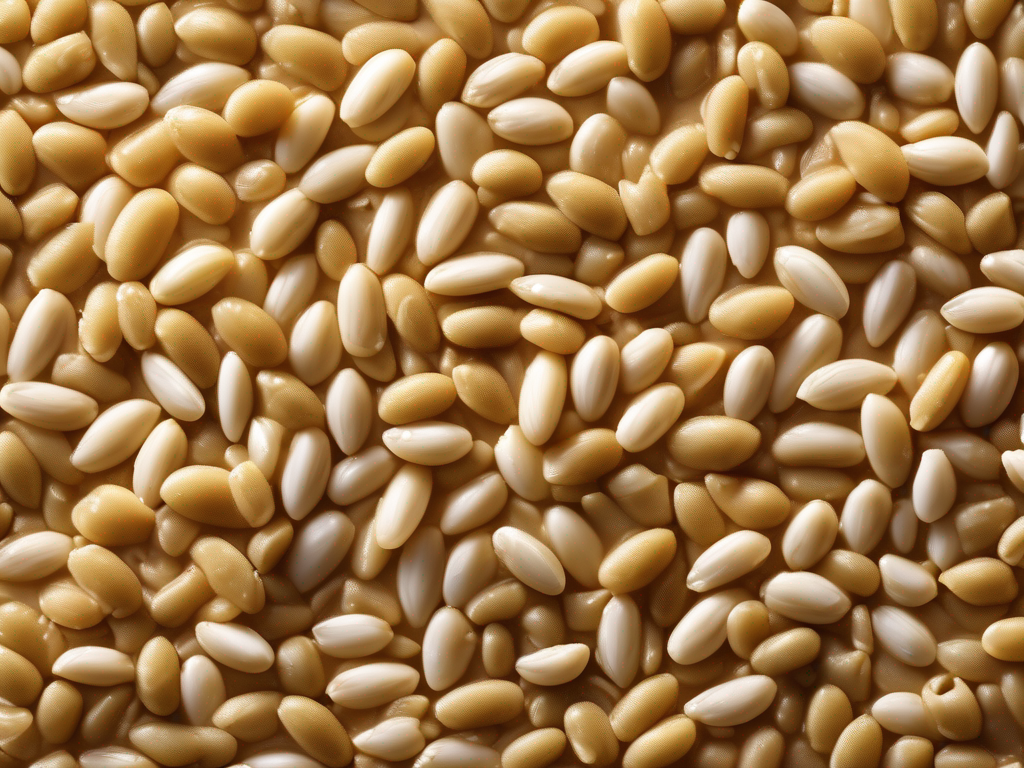
Ways to Repurpose Leftover Cooked Barley to Avoid Waste
Ways to Repurpose Leftover Cooked Barley to Avoid Waste
Are you looking for creative ways to use up that leftover cooked barley sitting in your fridge? Look no further! In this blog post, we will explore various delicious and practical ways to repurpose cooked barley, saving you both time and money while reducing food waste. (Cooked barley)
Still unsure if This Food is safe?
Every situation is different. Get a personalized food safety verdict for your this food based on the date, storage, and condition — in seconds.
👉 Check Food Safety NowWhy Repurpose Leftover Cooked Barley?
Cooked barley is a versatile and nutritious ingredient that can be used in a variety of dishes. By repurposing leftover cooked barley, you not only reduce food waste but also add texture and flavor to your meals. Plus, barley is packed with fiber, vitamins, and minerals, making it a healthy choice for your diet.
Safety Precautions When Using Leftover Cooked Barley
Before we dive into the creative ways to repurpose cooked barley, it's essential to ensure that you handle and store the leftovers safely to prevent foodborne illnesses. Here are some safety precautions to keep in mind:
Storage Tips for Cooked Barley:
- Store leftover cooked barley in an airtight container in the refrigerator for up to 3-4 days.
- If you don't plan to use the cooked barley within that time frame, freeze it in freezer-safe bags or containers for up to 6 months.
Reheating Cooked Barley:
- When reheating cooked barley, make sure to heat it to an internal temperature of 165°F (74°C) to kill any bacteria that may have grown during storage.
- Use a microwave or stovetop to reheat cooked barley, and stir it occasionally to ensure even heating.
Creative Ways to Repurpose Cooked Barley
Now that you know how to store and reheat leftover cooked barley safely, let's explore some creative ways to repurpose it in your meals:
1. Barley Salad:
- Mix cooked barley with fresh vegetables, herbs, and a light vinaigrette dressing to create a refreshing and nutritious salad.
- Add protein sources like grilled chicken, tofu, or chickpeas to make it a complete meal.
2. Barley Soup:
- Use cooked barley as a hearty addition to soups and stews. Simply add it to your favorite broth along with vegetables, protein, and seasonings for a comforting meal.
3. Barley Risotto:
- Substitute cooked barley for Arborio rice in a traditional risotto recipe. The barley adds a nutty flavor and chewy texture to the dish, making it a delightful twist on a classic.
4. Barley Breakfast Bowl:
- Start your day right by incorporating cooked barley into a breakfast bowl. Top it with yogurt, fresh fruits, nuts, and a drizzle of honey for a wholesome and filling breakfast option.
5. Barley Stir-Fry:
- Use cooked barley as a base for a delicious stir-fry. Add your favorite vegetables, protein, and Asian-inspired sauces for a quick and flavorful meal.
Conclusion
Repurposing leftover cooked barley is a fantastic way to reduce food waste while introducing a nutritious ingredient into your meals. By following proper storage and reheating techniques, you can enjoy the versatility of cooked barley in a variety of dishes. Get creative in the kitchen and experiment with different recipes to make the most out of your leftover cooked barley. Start incorporating these ideas into your meal planning to make your dishes more exciting and flavorful!
Remember, with a little creativity and planning, you can turn your leftover cooked barley into delicious and satisfying meals that your whole family will enjoy.
[Click here to learn more about cooked barley!](/food/cooked barley) (Cooked barley)
Related Posts
Here are some other articles you might find helpful:
Still unsure if This Food is safe?
Every situation is different. Get a personalized food safety verdict for your this food based on the date, storage, and condition — in seconds.
👉 Check Food Safety NowStill unsure if This Food is safe?
Every situation is different. Get a personalized food safety verdict for your this food based on the date, storage, and condition — in seconds.
👉 Check Food Safety NowAuthoritative Food Safety References
These agencies and university labs inform every tip and health precaution we publish.
USDA FoodKeeper – Cold Storage Guidelines
Official refrigerator, freezer, and pantry timelines maintained by the U.S. Department of Agriculture.
Visit USDA FoodKeeperFDA Produce Safety Rule & Grower Guidance
Field-to-fridge handling practices that prevent contamination of fruits, vegetables, and leafy greens.
Visit FDA Produce SafetyCDC Foodborne Illness Prevention Hub
Surveillance-backed guidance on pathogens, symptoms, and steps to reduce foodborne illness risk.
Visit CDC Food SafetyUC Davis Postharvest Technology Center
University research detailing optimal storage atmospheres for produce after harvest.
Visit UC Davis PostharvestPenn State Extension – Home Food Preservation & Safety
Peer-reviewed extension bulletins on safe canning, chilling, and reheating practices.
Visit Penn State Extension